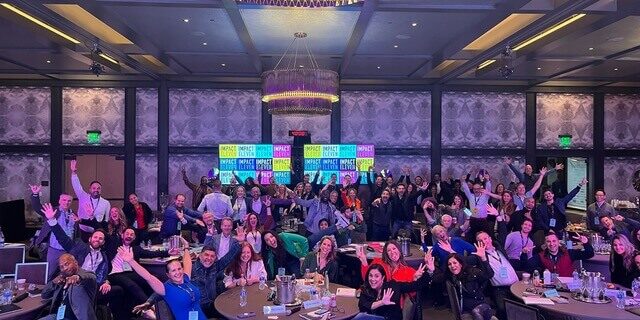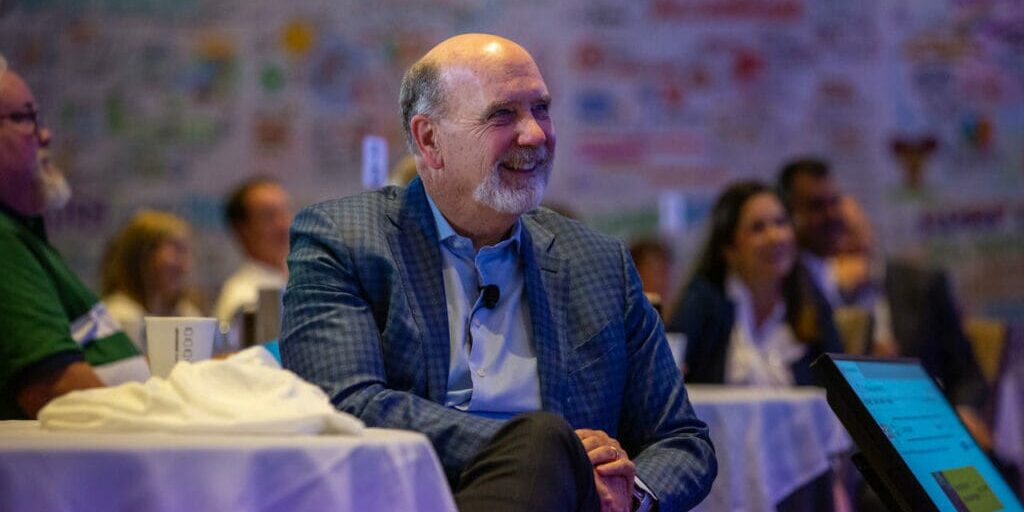Beginning as a personal care attendant in college and progressing to leadership roles within the UnitedHealth Group network, Stephan Rodgers has spent 25 years profoundly impacting patients, organizations and the larger healthcare industry.
Those experiences inform his most meaningful role yet: CEO of AccentCare, an industry leader providing post-acute home healthcare services. Supported by a rapidly-expanding team of 31,000 professionals serving 260,000 patients across 31 states, Stephan is transforming the way home healthcare is delivered.
The AccentCare mission is bold: Revolutionize home care through support services, providing peace and hope to patients and their families. “Reimagining care is about us, as an organization, shepherding an individual—a patient and a consumer, because they’re both—and their family through a time of their lives,” Stephan says. “In order for them to remain in the home, they need a certain level of support services built around them.”
Over the course of nine years, Stephan has steered AccentCare through a sweeping transformation journey. I thoroughly enjoyed the opportunity to work with his leadership team, and I thought his unique perspective on galvanizing organizations to embrace major change initiatives would be helpful to anyone called to lead in this time of challenge and opportunity. Our conversation was a master class in what servant leadership in healthcare looks like today.
Defining a Clear Vision for the Future
Whether stepping fresh into an established setup, propelling an organization to the next level from within or building from the ground floor, it’s crucial leaders start by asking three questions:
- What are you trying to do?
- What problem are you trying to solve?
- Why are you trying to solve it?
If you can answer those questions clearly, you can build a vision for the future.
Years of experience in home healthcare equipped Stephan to recognize the remarkable opportunity if someone could offer home healthcare services at scale. “I had an industry and a mission coming into post-acute care,” he says. “I started looking at the environment and recognized that it was a suboptimally run set of assets. But I also saw where trends were going, and how care in the home was so important, so I started looking for the best place to be if you wanted to do it at scale.”
At AccentCare, he found an organization with a mindset that matched his own, and a structure and framework that could grow and adapt to meet the opportunity.
Building on Small, Steady Successes
Most health care organizations are not prepared to leap headfirst into large-scale change initiatives, which can be discouraging to idealistic and enthusiastic leaders. “Reality will suboptimize your vision every day,” Stephan cautions. “That’s the constant battle: the reality of the present grinding down what can be done in the future.”
By taking an incremental approach, leaders and their organizations can temper the frustration of this battle and use a succession of small successes to lay the foundation for much larger change. Stephan first leveraged the existing AccentCare core healthcare program to build a platform and marketplace with the size, scale and density for a successful in-home business. Off the back of that accomplishment, he was able to move toward his vision of what the company could be. “I’d earned the right to a strategy,” he says.
That strategy evolved over time, fine-tuning itself with every challenge the journey posed. Yours will too. “Your strategy is as much a learning entity as your organization should be,” Stephan says. “Your strategy needs to adapt to the marketplaces and the reality of what you can actually get done, not what you think you can get done.”
The key is a willingness to make compromises without sacrificing the essence of your vision. “You have to keep elevating your conscience around what you’re trying to achieve, or else you will be subsumed by the reality of the present,” he says.
However, even the most innovative vision will be doomed by a leader who is unwilling to take action when the time is right.
Often, those signs are obscured by adversity. “It’s actually a time to accelerate change during disruptive environments, not to hold back,” Stephan argues. “During times of crisis, you have a greater opportunity to pull more levers.”
The hyper-disruption of the COVID-19 pandemic, for example, allowed Stephan to accelerate AccentCare’s transformation journey.
Building a Powerful Leadership Collective
One of the biggest deterrents to any large-scale transformation is not having the right people in place to execute the strategy. Talent acquisition is a vital component of an organization’s success.
The best leaders are willing to learn and listen from their teams. They also recognize they are responsible for surrounding themselves with people worth listening to. That means developing a team of leaders who not only understand and appreciate the vision, but actively work to elevate, clarify and refine the mission.
That process takes time—sometimes lots of it. “It took us probably four years to finally get the right people,” Stephan says. “I had to have a lot of persistence, but it was critical to the overall business and our success.
“Now, six years later, we’re seeing the results—we’re seeing our ability to actually process referrals in microseconds, our ability to actually create a more consistent consumer experience and we’re seeing decreased costs on our transactions coming through out of it. That all happened because I finally got the right person in.”
Stephan attributes a major part of AccentCare’s successful transformation to the remarkable leadership team surrounding him. Tight-knit and supportive, it is more than the sum of its parts. It’s a model for servant leadership in healthcare organizations.
With momentum behind his mission, it would be easy for Stephan to rest on his laurels and enjoy the ride. Instead, he’s doing the opposite to ensure the hard work pays dividends for generations to come. “A critical shift for a sustaining business is the ability to actually develop and perpetuate its own leadership and talent,” he says. “My objective over the course of the next several years is to create that perpetual leadership cycle.”
That has meant serious investment in AccentCare’s leadership and development function, such as bringing in executive coaches to teach leadership skills to the company’s professionals out in the field. The result has been a team that serves as one of the finest servant leadership examples in healthcare in the nation.
Investing in Consistent Communication
At the heart of any successful transformation project is a leader with the ability to galvanize their team. Stephan’s leadership style emphasizes the importance of clear, regular communication.
“As the CEO, you have the pulpit,” Stephan notes. “You get to decide what the messages are and how those messages are conveyed. It’s critically important that you have a constant voice out there communicating where you’re going, what you’re trying to do and why you’re doing it.”
Since the messaging, like your strategy itself, will evolve as you navigate the murky waters of change, you must commit to a cadence of communication with your team that allows constant reminders and revision of the collective vision. This is absolutely critical for employee engagement. “You need to keep your fingers on what’s going on inside the organization so you can continue to direct and redirect, and make sure that you’re keeping everybody aligned around what you’re trying to get done,” he says.
In addition to weekly one-on-ones with each leader, Stephan regularly designates executive time with the entire team. “We carve out an hour and a half every week to spend time together with a loose agenda. I’m always amazed at how we take this time to essentially go through critical things going on in the business and have conversations around it.”
Stephan has also established a rhythm of regular off-site meetings—every four to six weeks, for a full day—for his leadership team to regroup and brainstorm big ideas. “We hit key things that you just don’t have time to get into during those weekly cadence meetings,” he says. “We’ll go through what’s going on in this operation model change we’re looking to push out in the field, or how we are responding to key integration things going on.”
This commitment to communication is one of the core characteristics of servant leadership.
Maintaining a Healthy Perspective and Balance
Stephan is acutely aware of the need for balance over the course of a long-term, large-scale transformation project.
Giving people time to rejuvenate—for their own good and the good of the business alike — is a core part of his leadership philosophy.
“As a leader, I believe in giving people room in their lives,” he says. “Having some flexibility around their personal lives creates the balance that you need to have, or else you’ll burn your people out.”
That means not bombarding them with messages during off hours, or ending the week on a sour note that will burden employees with undue stress.
Above all, it means being realistic about what can be accomplished in a healthy working environment: “We have to constantly check ourselves around how much change we can drive in any given period of time.”
Finding Joy in Servant Leadership
Our interview ended with a simple question: “What’s the best leadership advice you ever received?”
Stephan surprised me, by responding with what he wished he’d heard: “I wish I had learned earlier to be much more of a servant leader—to be the person who actually is not about advancing yourself, but advancing collectively what you’re trying to do.
“The reality is that those who do that are recognized and brought up faster—and it’s just so much more fun too! It’s pretty lonely when you’re out there and you think you got to do it all yourself,” he shared.
“You’re driving all this change and it’s all about you and what you’re trying to get done. It’s so much more fun and so much more rewarding to be together.”










